Ireland is a superb place to go bird watching.
Regardless of whether you are a complete beginner with an interest in birds, or a passionate birder there are plenty of great opportunities.
These include seeing common birds in a wide range of habitats, or even observing rare birds, if you happen to be at the right place at the right time.
This post may contain affiliate links. If you click on one of them, we might receive a small commission (at no extra cost to you). Thanks for your support!
Table of Contents
- 1 Irish Birding
- 2 Birds of Ireland
- 3 Why is Ireland good for bird watching?
- 4 Bird Watching Habitats in Ireland
- 5 When is the best time to go birdwatching in Ireland?
- 6 Where can I watch birds in Ireland?
- 7 Bird Watching Dublin Locations
- 8 Bird Watching East Coast of Ireland
- 9 Bird Watching West Coast of Ireland
- 10 Bird Watching South Coast of Ireland
- 11 Midlands Ireland Birdwatching
- 12 Bird Watching Northern Ireland
- 13 Bird Watching in Ireland FAQ
- 14 Irish Birds
Irish Birding
Ireland is a popular place for Irish birders, as well many international birders are also drawn to the country for its unique birding opportunities.

So regardless of whether you want to bird watch the common birds in Ireland from the comfort of your own garden or want to explore the many different species of both land and sea birds that are sighted in Ireland each year, Ireland will not disappoint.
Birds of Ireland
The Irish Rare Birds Committee report keeps track of all the species sighted in Ireland. At present, there are thought to be roughly about 490 different species sightings. (Common and Rare Bird Sightings Ireland Report from 2019)
While Ireland as a somewhat isolated island on the edge of Europe may not have a particularly big list of breeding bird species, the western location of Ireland in relation to many migratory routes and its mild weather conditions also bring other avian visitors to the shores.
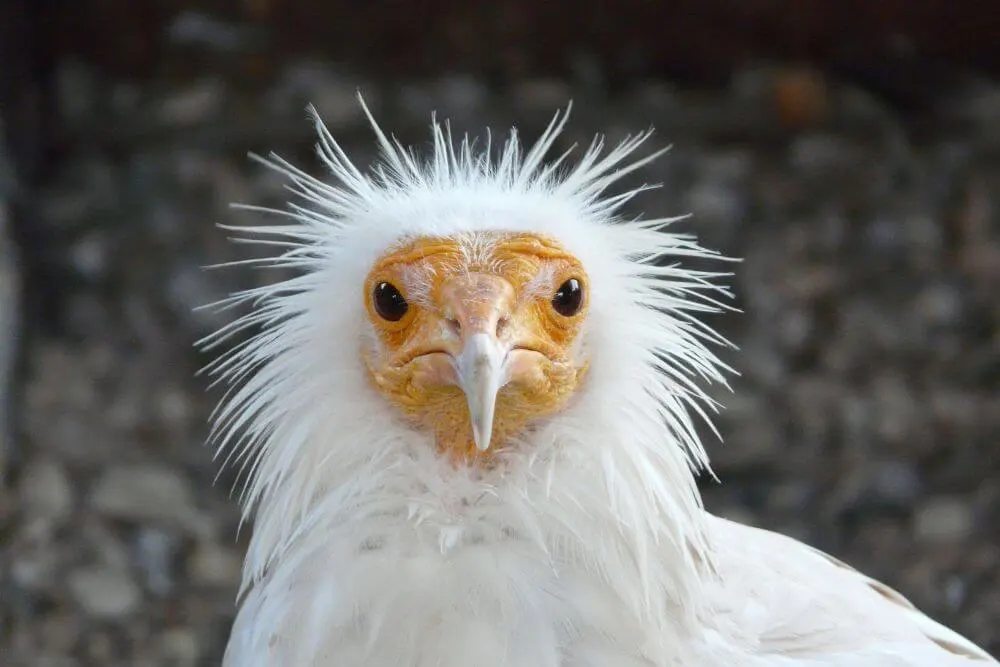
Irish rare bird sightings can cause great excitement within the birding communities. Some of the rare birds that occasionally turn up in Ireland are particularly special and sought after by birdwatchers. This is particularly true of Twitchers.
(Twitchers are best described as a subgroup of birders who will drop everything and travel, sometimes even long distances, to the place where a rare bird was sighted on the off chance that they might be able to catch a glimpse of this rare bird too.)
Why is Ireland good for bird watching?
The combination of Ireland’s location on the west of Europe and mild climate makes it a superb location for bird watching. In addition, Ireland has many different suitable biodiverse habitats that provide both food and shelter to the resident and migratory birds.
Many migratory seabirds and shorebirds travel long distances and use Ireland as a transit point on their journeys. These passage migrants avail of the good feeding opportunities that are found in the coastal areas. Once they have refueled, they travel onwards on their journey.
Climatic conditions in Ireland mean that the winters are rarely very cold, with only occasional snow and freezing temperatures. This keeps the ground cover free and soft, which enables wildfowl and wintering birds to avail of the rich food supplies in the wetlands, lakes, marshes and tidal estuaries.
Bird Watching Habitats in Ireland
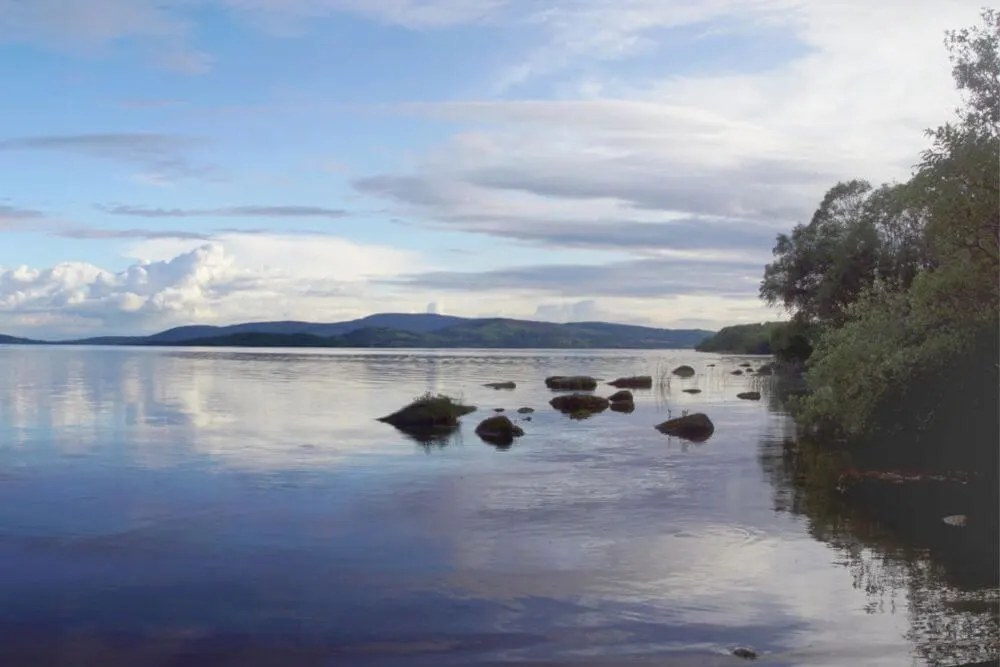
Irish coastal birds enjoy a wealth of habitats. These include mudflats, tidal estuaries, marshes, rocky cliffs, rugged shorelines, sandy beaches and dunes habitats, which are attractive to many different resident and migratory bird species.
In addition, there are also offshore seabird colonies on the smaller islands. Some of these islands, like the Little Skellig are uninhabited and seabirds can breed without human disturbance.
Irish lakes, wetland areas and rivers are ideal habitats for birding.
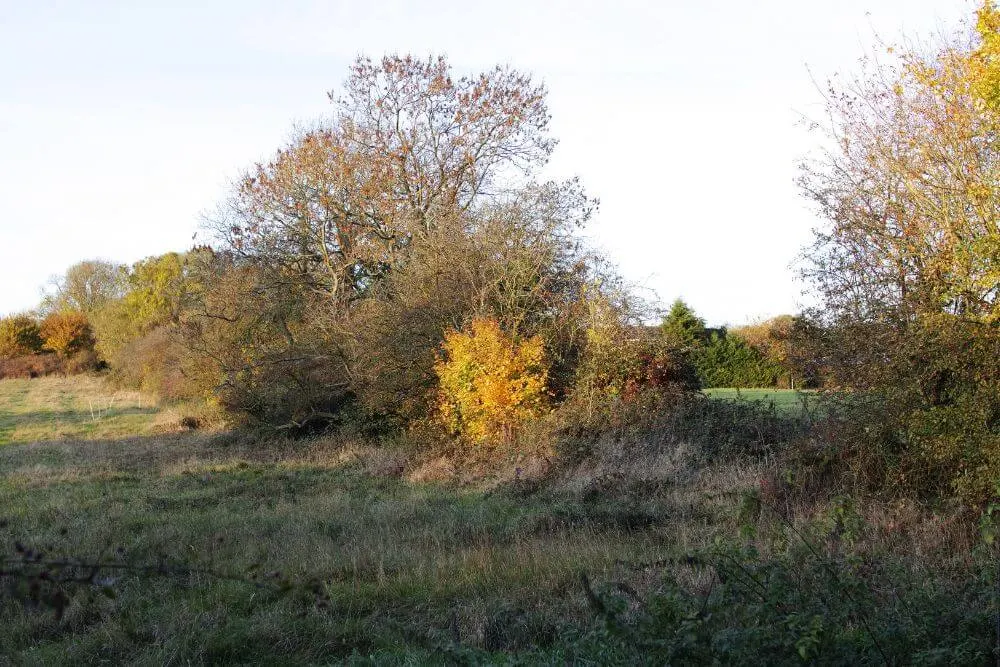
The hedgerows found throughout much of the Irish countryside are exceptionally important for birds, as well as biodiversity in general (Find out more about trees and hedgerows here). Hedgerows provide shelter and food for birds like Robins, Blackbirds, Wrens and many more species throughout much of the year.
Woods, fields, meadows, as well as the bogs and mountainous areas are home to other bird species.
When out birding in Ireland, birders not only get to enjoy observing bird species, but while hiking around the countryside they get to experience the great diversity of stunning landscapes that Ireland has to offer. (Often relatively undisturbed by other people!)
When is the best time to go birdwatching in Ireland?
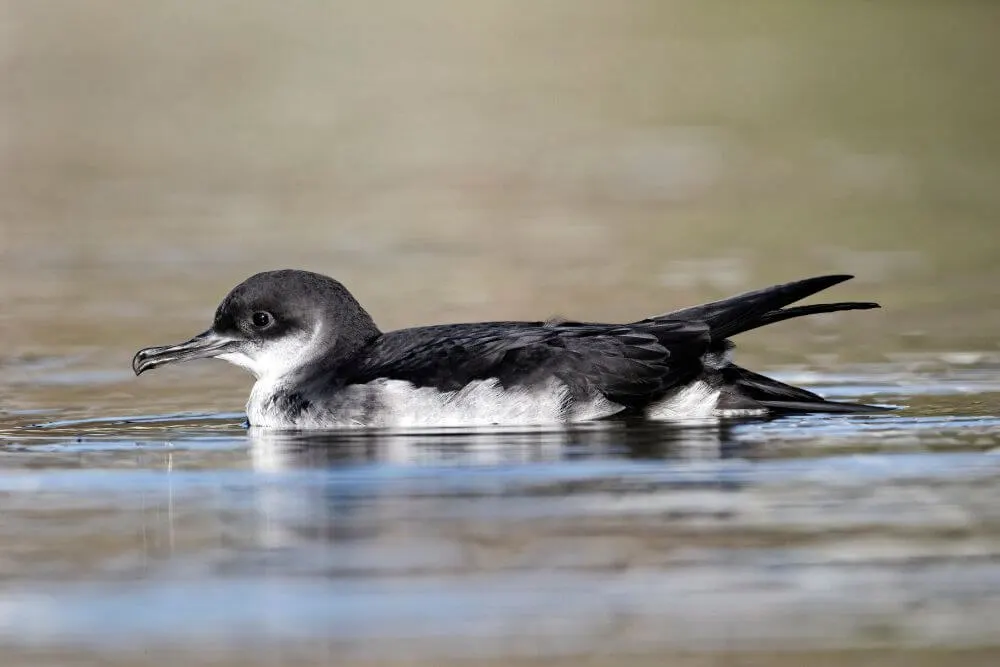
Bird watching in Ireland can be a fun rewarding experience throughout the year. The best time to see some of the many migratory birds often stopover in Ireland in spring and autumn on route to the summer or winter feeding grounds.
Also note that some birds tend to fly at night during their migration as this helps them escape some of their predators and allows them to focus on foraging and refueling during the precious daylight hours.
Birds can be attracted to the lights from lighthouses which signal to them that land is near. Headlands with lighthouses (Hook Head for example) or other areas near lighthouses (Cape Clear is not too far away from the Fastnet Rock) can act as beacons for migrating birds.
Wind and Weather
Weather plays a big part in bird watching. Birds sometimes tend to rest during inclement weather if possible and become active again once the weather improves. If you go out bird watching after such weather (particularly in spring and autumn) you might increase your chances of seeing some rare species.
Also keep an eye on the wind forecast. When the wind is blowing in the same direction as the birds are flying, this might increase your chances of seeing some of the migrants.
(As with all outdoor activities, especially ones near the coast, cliffs or water, please pay particular attention to safety at all times!)
Spring Bird Watching Ireland
In spring, the south and east coast of Ireland tend to be the areas where the birds meet landfall first on their migratory routes. Some sightings are also recorded along the west coast of the country as well.
Headlands and islands around Cork, including Cape Clear, are good choices if you want to catch these migratory birds making landfall. Further east towards Waterford and Wexford, there are also places including the East Coast Nature Reserve (County Wexford) that receive temporary visitors at this time of year.
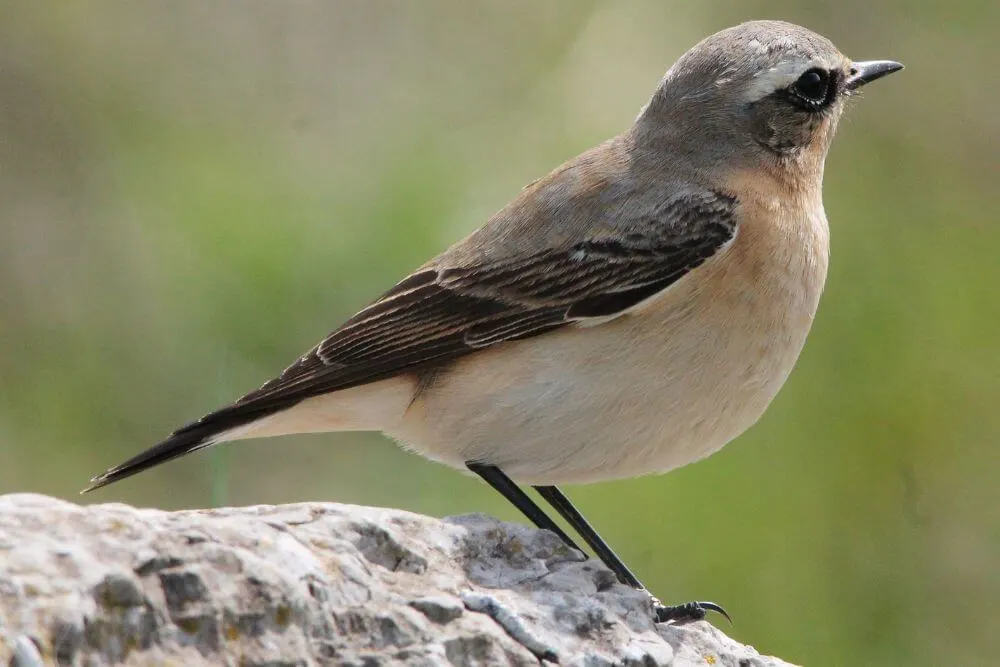
Birds such as Wheatears tend to be among the first to arrive. These are followed by the likes of the Warblers, such as the Chiffchaffs who seek warmer climates of the Mediterranean during winter. April is usually when the first Swallows appear after completing their migration from South Africa.
One of the best times to see raptors is in early April, at the start of the mating season, when birds, like the Hen Harrier, perform their famous skydance as part of the courtship rituals. Other mating rituals, such as the impressive water ballet performed by the Great Crested Grebe is also a sight to behold!
Summer Birdwatching Ireland
Bird watching in Ireland during the summer can be a very enjoyable experience. The weather alsolikely to be a bit better than spring or autumn (well, maybe!).
This is the time when it is best to head to the coast and try to observe some seabirds. Many of these can be viewed without the need to take to the water in a boat. These locations include Howth Head and the Cliffs of Moher, for example.
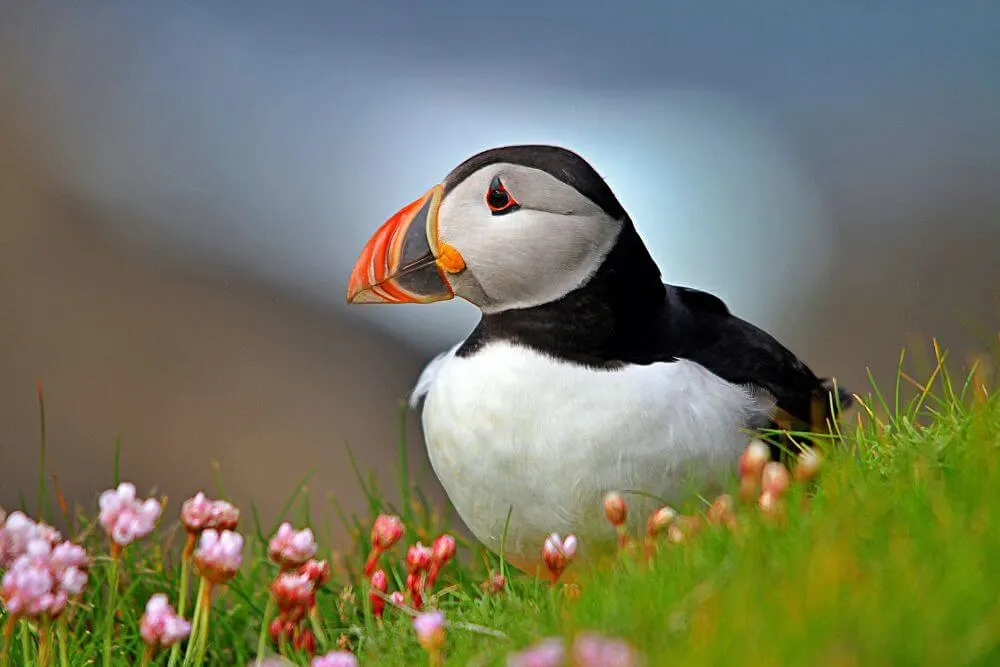
For a better view of some of the seabird colonies, then it is best to get a boat tour either around or to some of the islands off the coast. The Skellig Islands, off the coast of Kerry (famous for its early Christian monastic site and use as a Star Wars filming location), is well worth a visit for many reasons. The sheer number of nesting birds on the Skelligs makes it particularly special and important. It is one of the biggest Gannet colonies in the world.
If you prefer to stay away from the coast, there are many other good birding places to visit. Lucky birders in the Midlands (Shannon Callows) or on Tory Island in County Donegal might hear the rare sound of the endangered Corncrake. (During the summer when the grass is high, it is difficult to actually see these birds in the meadow vegetation.)
Autumn Bird Watching Ireland
Autumn is once again a very busy time in the Irish birders calendar. From about mid-August the first migrating birds depart Ireland, mostly heading in a southerly direction. This can continue until about late October.
All of the migratory adult birds and their juvenile offspring make these incredible journeys. The number of birds migrating is therefore considerably more than in spring time for the return journey.
Around the same time, the first winter migratory birds arrive in Ireland. These include the wading birds from North Europe, such as waders from Iceland and Greenland. The eastern and southern coast of Ireland receives large numbers of waders, so the best chances of seeing them is to head to the mudflats and estuaries.
Some Pipits and Finches that one might recognise from garden bird watching also migrate to warmer areas for the winter. Headlands on the western and southern coast of Ireland once again provide good opportunities to see these birds depart.
American Vagrants
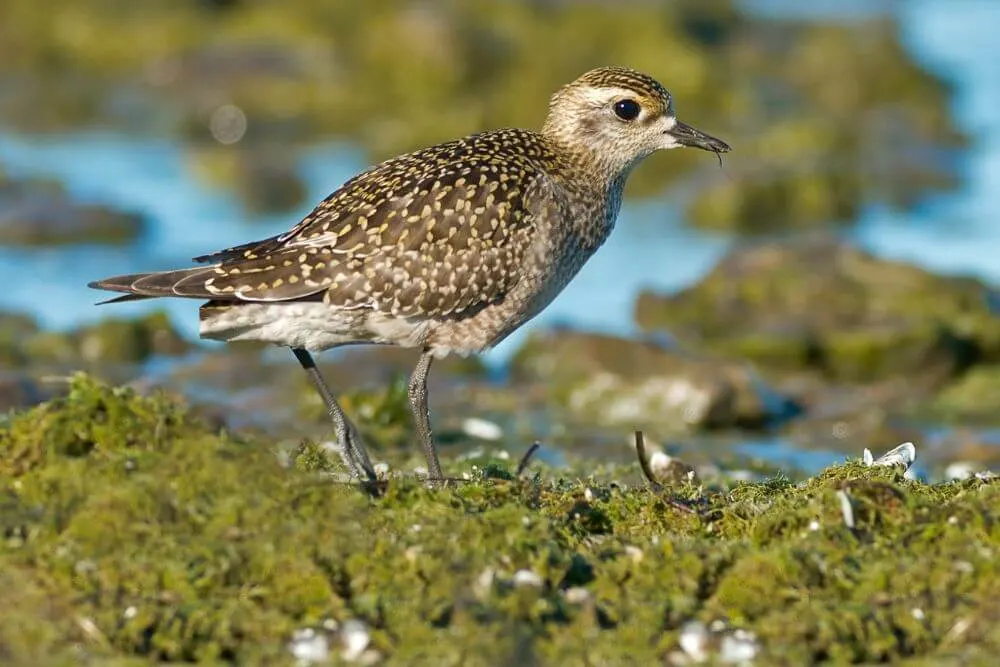
Early September to mid-October is one of the best times to catch some odd vagrants from North America that sometimes get blown in this direction as a result of storms in the Atlantic. In fact it is somewhat surprising that they can survive at all, given the combinations of suitable weather and fat reserves that these birds need.
Species such as the American Golden Plover and Lesser Yellowlegs are seen more regularly, but there are the occasional surprises with more rare species like Killdeer or Greater Yellowlegs.
Winter Bird Watching Ireland
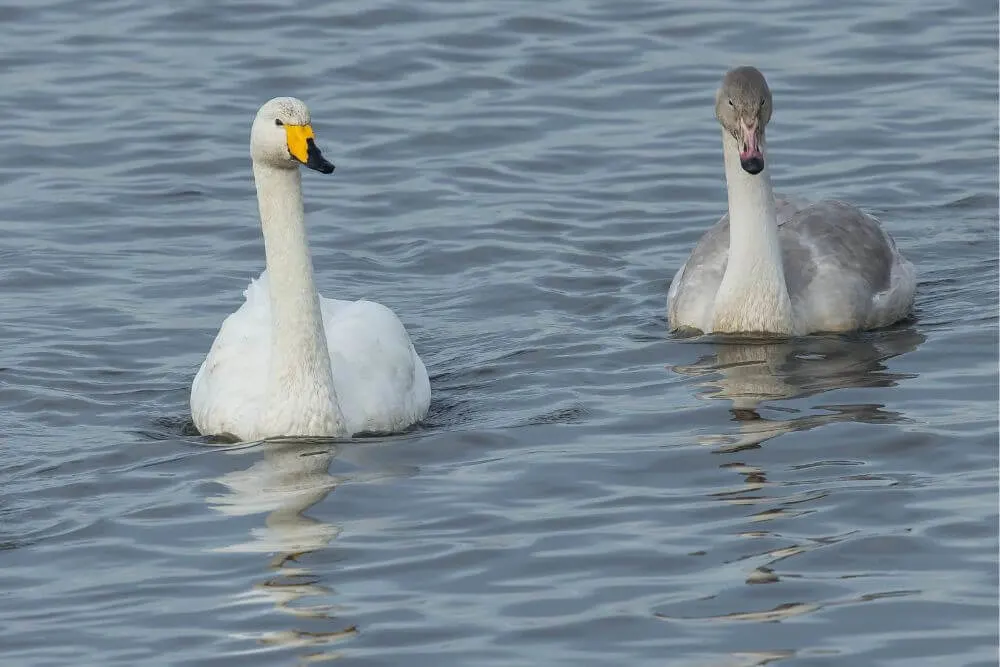
Ireland in winter is a particularly attractive place for many bird species. The damp, yet mild winters ensure that there is a good supply of food, even through the harsher months.
Waders and other waterfowl, as well as passerine species from further north come to Ireland during the winter.
Bellied Brent Geese travel from Canada and Greenland to make Ireland their winter home and can often be out feeding.
Many White-Fronted Geese flock to the Wexford Wildfowl Reserve during the winter, which is also where swans, such as the Whooper Swan and Bewick’s Swan, can be seen.
Winter is a great time to visit Ireland if you have a particular interest in gulls too, with many different species gracing our coasts. The fishing town of Killybegs or the harbor area in Galway are just some of the places where you can see some of the common, as well as rarer species.
Where can I watch birds in Ireland?
Ireland has lots of great locations to watch birds. Many people interested in birdwatching start by simply observing birds in gardens, parks, woodlands and estuaries. They then progress onto some of the other well known bird watching locations, especially if they are hoping to catch some rarer birds at particular types of the year.
Best Places for Bird Watching in Ireland
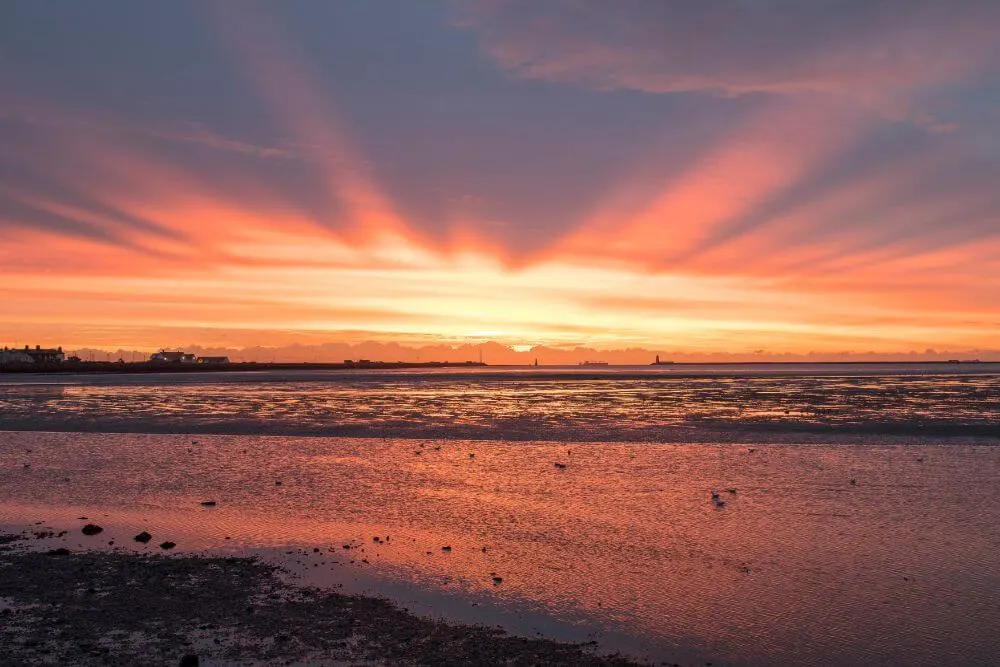
The best place for bird watching depends on the time of year, weather and what you are hoping to see.
Here are some of the best bird watching places in Ireland:
- North Bull Island National Nature Reserve
- Bridges of Ross, County Clare
- Wexford Wildfowl Reserve
- Cape Clear Island, County Cork
- The East Coast Nature Reserve, County Wicklow
There are however plenty more great locations scattered across the country!
Bird Watching Dublin Locations
North Bull Island National Nature Reserve, County Dublin
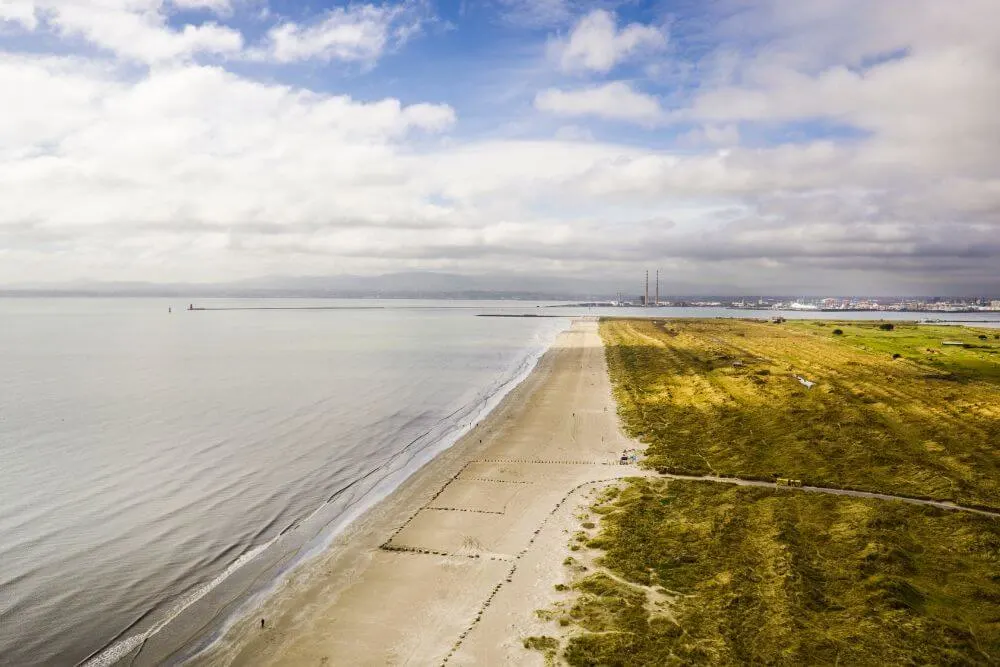
This bird watching location is one of the most popular in the country as it has a wide variety of bird species throughout the year and is very accessible to many being located in Dublin Bay on the outskirts of Dublin City.
Bull Island Nature Reserve is a National Bird Sanctuary. In fact, it was the first area to be designated with this status back in 1931.
With the 5km long sandy beach, Dollymount Strand, backed with sand dunes on one side of the island, and mudflats and a saltmarsh on the other, this tidal complex is a haven for waders, wildfowl and other wildlife.
The dune habitat is also home to many other species of bird, including birds of prey such as Kestrels, Peregrine Falcons and Merlins, and the occasional Short-Eared Owl. These species hunt the wading birds during winter months.
This is a tidal area, please take all the necessary care required in this environment. Do not walk out into the mudflats as this can be dangerous and it is also likely to harm wildlife.
Howth Head, County Dublin
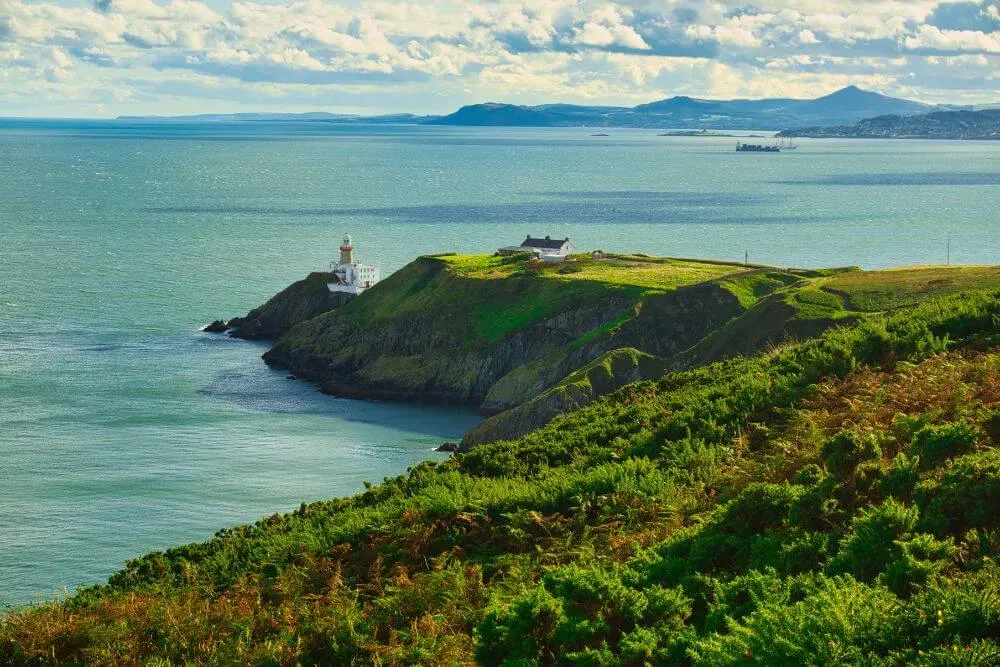
Howth Head, on the northside of Dublin, is another great location for birding within easy reach from Dublin. Seabirds such as the Ganets, Guillemots, Razorbills and Fulmars are just some of the species that are regularly seen nesting in and around the cliff areas.
While it is tempting to keep your eyes on the cliffs, don’t forget to look in the vegetation and scruby areas on Howth Head as well, for this is where you will catch other bird species, such as Linnets, Meadow Pipits, Whitethroats for example.
If you are in the Howth Head Cliff Walk area, it might also be worth checking out some other bird watching nearby including Howth Harbour, as well as the small island called Ireland’s Eye (ferry boat trips available). Broadmeadows in Swords is also a good nearby birding location.
Bird Watching East Coast of Ireland
Wexford Wildfowl Reserve, County Wexford
The Wexford Wildfowl Reserve is a very popular birding spot in Ireland. A range of habitats found here including wet grassland, reed beds, sandbars and mudflats. This area is of particular importance for migratory waterfowl in winter as it provides a place to forage, feed and rest.
Large numbers of Greenland White-Fronted Geese, Brent Geese, Whooper Swans, ducks such as Teal and Wigeon and many waters are found here during the winter months.
Impressive birds of prey, such as Peregrine Falcons, Kestrels and Sparrowhawks are also seen here.
East Coast Nature Reserve, County Wicklow
The East Coast Nature Reserve in County Wicklow is a protected area that is home to many waterfowl particularly in winter, but there are also many other species found here including Kingfisher, Curlew, and Little Egret.
The area was once intensively managed for agriculture, but thanks to the efforts of BirdWatch Ireland and several EU funded initiatives, the site has been transformed into fen (rare calcareous fen), wet grassland and woodland habitats. These different habitats are not only home to species of bird such as the Reed Bunting and Water Rail, but also many invertebrates, such as dragonflies and many species of butterflies and frogs as well.
More information about this amenity can be found here.
Saltee Islands
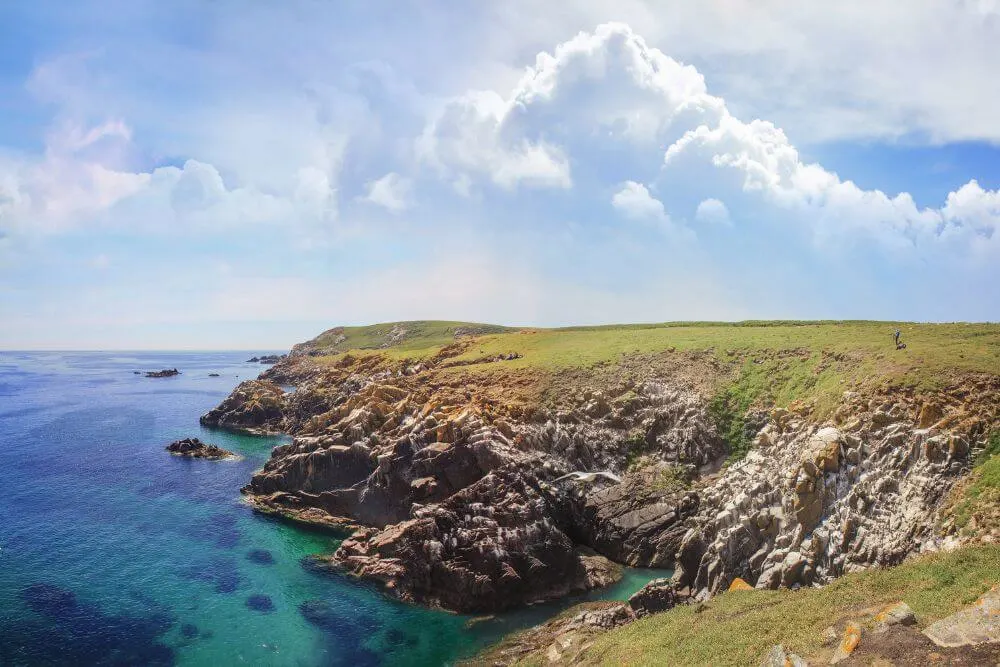
The two Saltee Islands (The Great Saltee and Little Saltee Islands) off the coast of Wexford are protected habitats and very important bird sanctuaries. The mudflats, as well as sandy areas on the islands attract many species of seabirds, including Razorbills, Shags, Gannets and Kittiwakes. Gray seals also breed on the Great Saltee island.
It is possible to visit the Great Saltee for day trips. Ferry boats depart from Killmore Quay). The island is privately owned and all visitors must leave by 16.30 each day.
Due to dangerous landing conditions, it is not possible to visit the Little Saltee Island.
Bird Watching West Coast of Ireland
Bridges of Ross County Clare
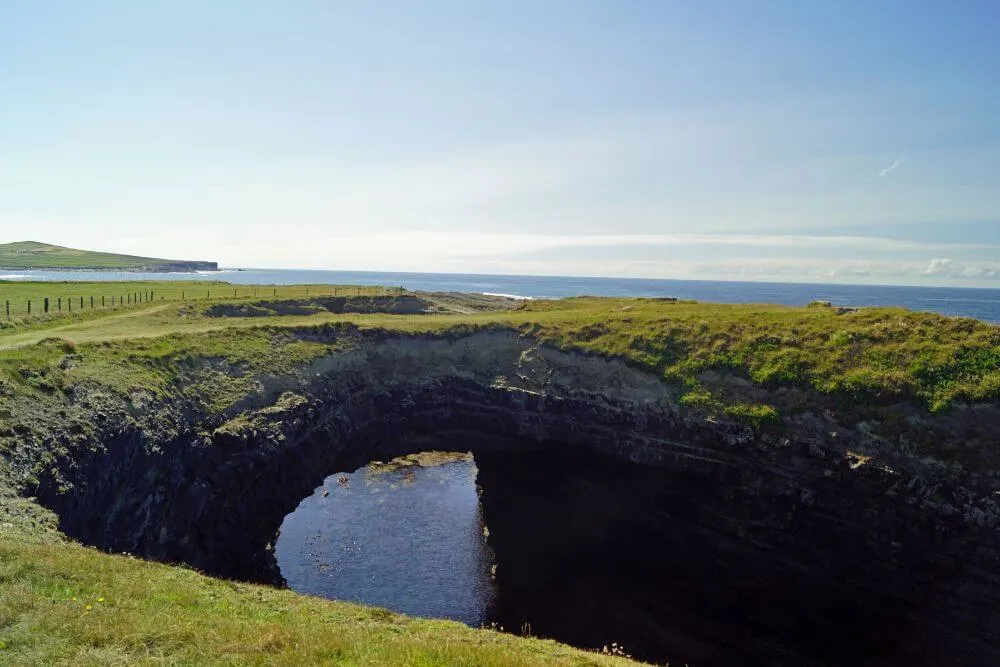
Clare birdwatching spots are some of the best in the country.
A visit to the Bridges of Ross in County Clare is particularly worthwhile in late summer and early autumn.
This area of coast is an excellent place to sea-watch the migratory seabirds during late summer and early autumn as they very often just pass overhead. Even if you are not lucky enough to catch a sight of many birds, the views of the Atlantic Ocean and Western Coast are very impressive.
This unusual highlight on the Wild Atlantic Way is not necessarily one of the best known along the west coast, but is a good spot to explore if you are heading in the direction of Loop Head.
Did you know? The Bridges of Ross once referred to three sea arches along the Clare coast, located not far from Kilbaha. Two of these arches no longer exist, but the name of the bridges has stuck.
Cliffs of Moher
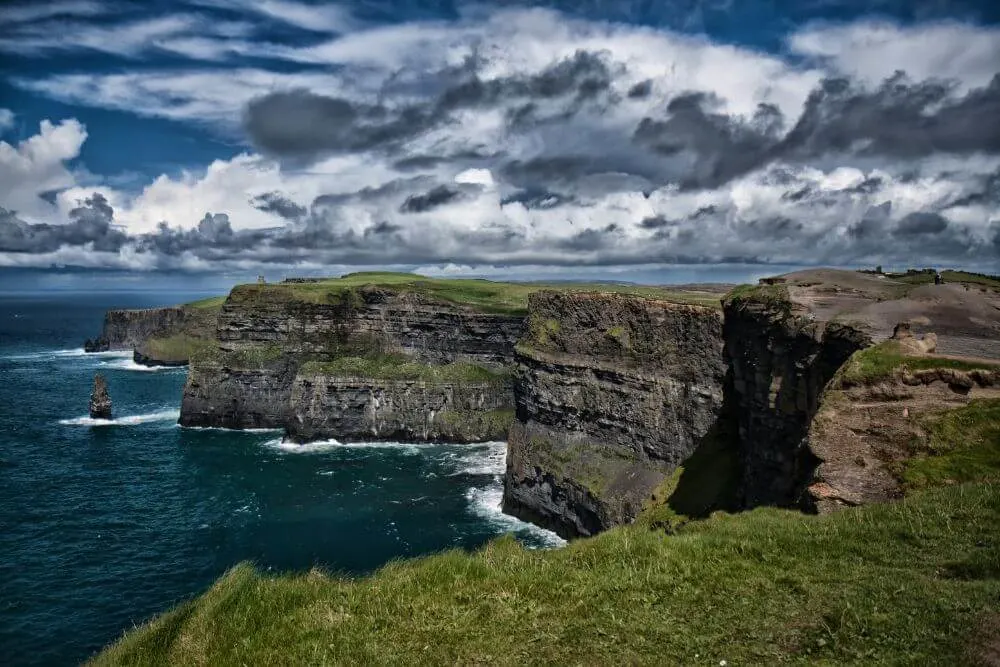
The Cliffs of Moher are one of the most visited attractions in Ireland. While most people only tend to marvel at the cliffs, others come to see the impressive seabird colonies that nest there including Guillemots, Fulmar, Razorbill and Kittiwake.
Not only the cliffs themselves are important for the birds, but the grassland areas on the clifftop too where you might see the odd Kestrel hovering for its prey, or if you are lucky a Chough.
For bird watchers, the best time to visit the Cliffs of Moher is between May and August to see them in their full glory.
As one of Ireland’s prime filming locations, the Cliffs of Moher also featured in Harry Potter.
Puffin Watching Ireland – Did you know? The largest colony of Puffins in Ireland is found at the Cliffs of Moher.
Bird Watching South Coast of Ireland
The Skellig Islands
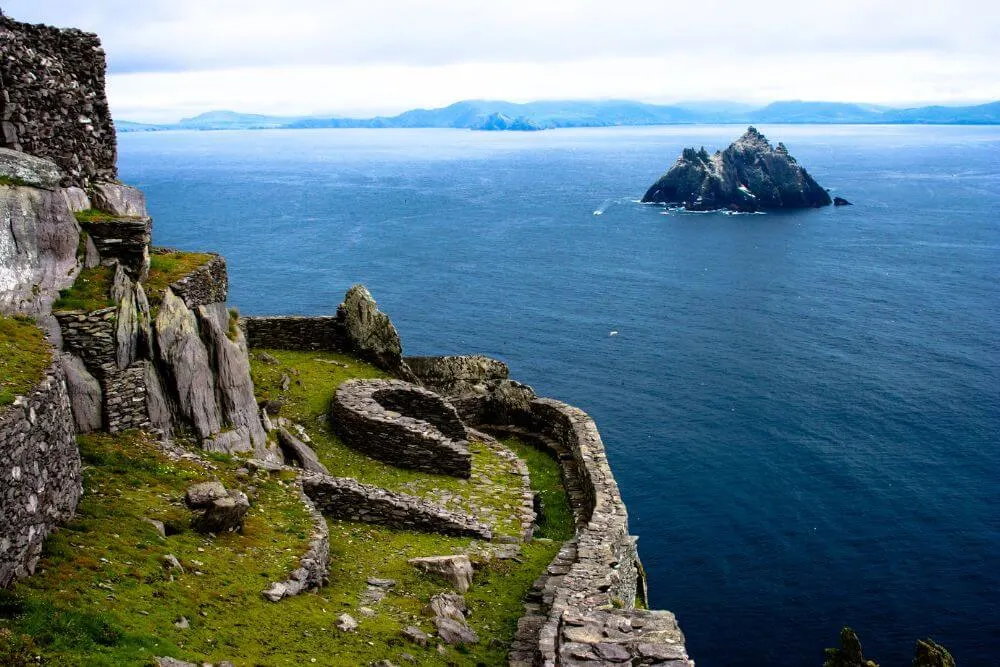
These unique islands off the County Kerry coast are famed for their large seabird colonies. One of the largest Gannet colonies in the world is found here, along with many other birds such as Razorbills, Black Guillemots, Fulmars, Manx Shearwaters, Cormorants, Arctic Terns and many more.
The best way to see these colonies is by boat. Several different tour companies offer boat tours around Skellig Michael and the Little Skellig. (Note this is a different tour to the one that lands on Skellig Michael and is popular with Star Wars Fans.)
Please note that access to the Little Skellig Nature Reserve is only with written permission from BirdWatch Ireland.
Cape Clear Island
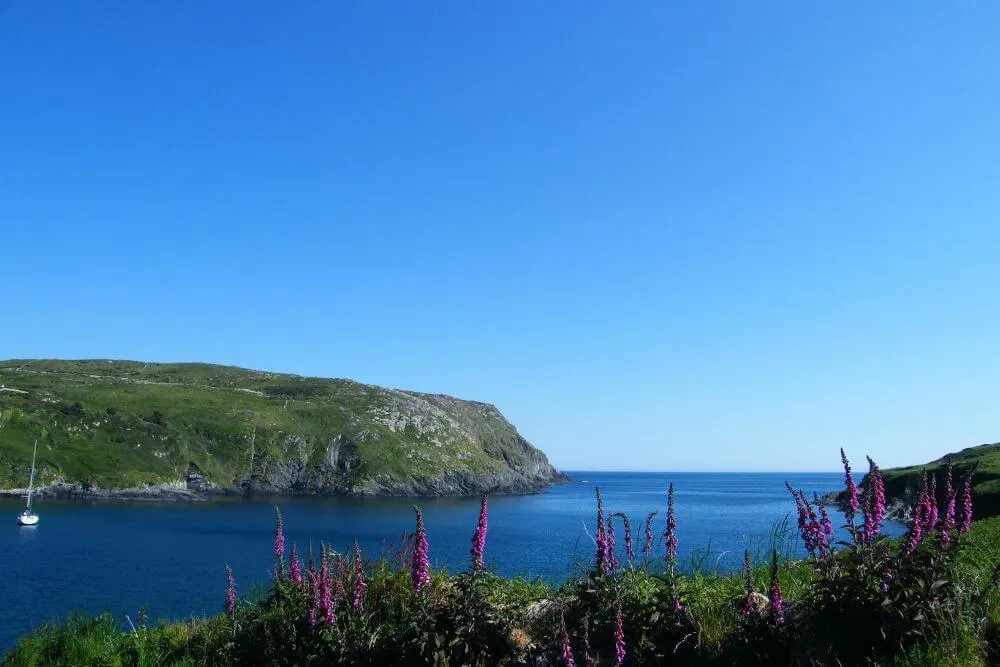
Cape Clear Island is one of the most interesting places in Ireland to bird watch. This small island off the coast of County Cork is a mecca for seabirds and unusual migratory birds. The potential of the island for birdwatching was spotted early on and there has been a bird observatory on the island since 1959.
The location of the island on one of the most southerly areas of the country means that for many birds, it is the first landfall they encounter. Many birdwatching sites are found around the island, including by the Lighthouse and Pointabullig (Pointe na Boilge). From here, you can seawatch (or see the migratory birds flying in from the sea) during late summer. If you can time it right, you might just see the breathtaking spectacle of thousands of Manx Shearwaters flying over from their winter feeding areas in the Southern Atlantic for example.
Not only do birders head to Cape Clear, there are many other great opportunities to see more of Ireland’s wildlife, including whales, dolphins, Basking Sharks and sometimes even Leatherback Turtles off the coast.
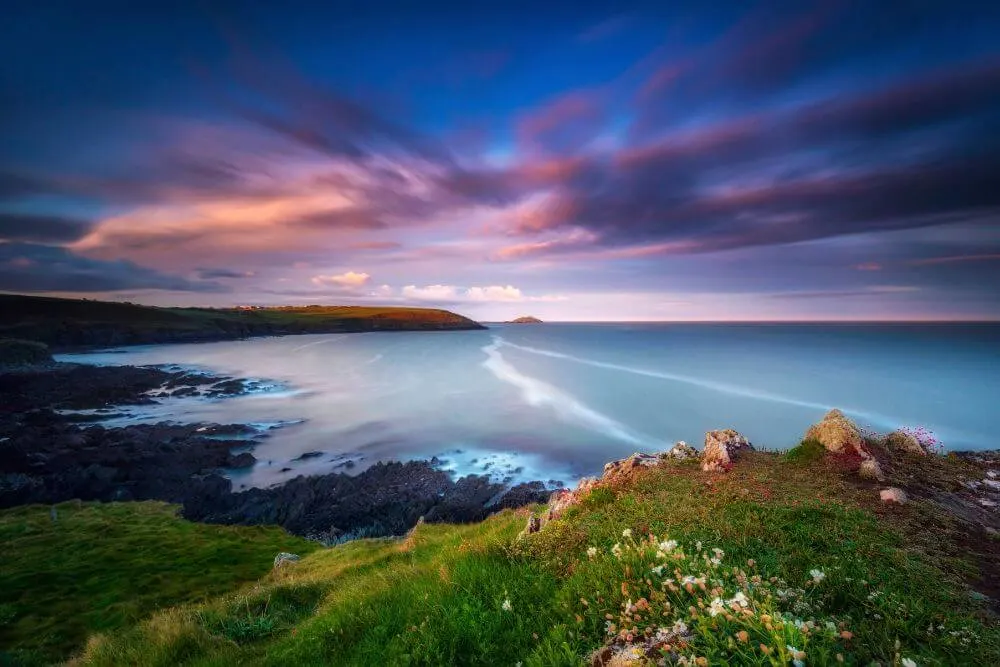
Some other famous bird watching spots around Cork include Ballycotton in East Cork and Cuskinny Marsh Nature Reserve located near Cobh (just one of the places where you will find Kingfishers in Ireland).
Midlands Ireland Birdwatching
One of the most important areas of the Midlands for birdwatching is the Shannon Callows. This flat area has not been intensively farmed unlike other areas of Ireland due seasonal flooding that takes place here in winter.
This is particularly good news for the Corncrake among many other species, as it is one of the few places in Ireland where this seasonal visitor is found. Whinchats and Sedge Warblers are just a few of the other species that can be found here in the summer.
Winter is when you might get a chance to see Black-Taliled Godwits, and other migrant swans, ducks and geese.
Bird Watching Northern Ireland
Oxford Island Nature Reserve, County Antrim
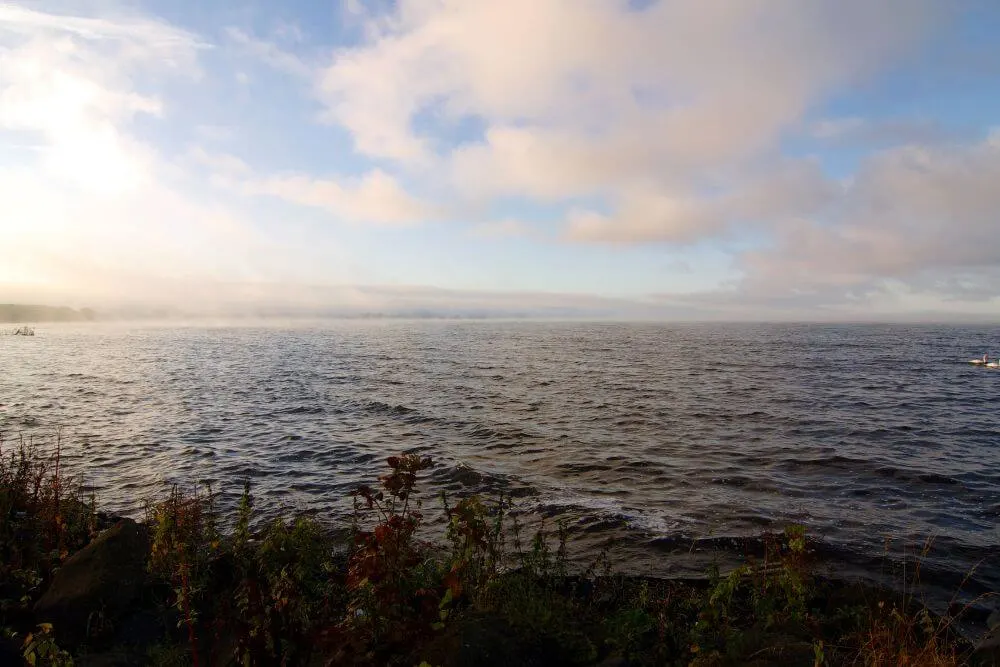
The Oxford Island Nature Reserve on the shores of Lough Neagh is a great spot to watch the bird species, particularly ducks, on the lake. This reserve is not in fact an island as the name suggests, but rather a peninsula that juts into the lake. (There are also several bird watching hides, as well as walking trails around the reserve.)
Lough Neagh is the largest lake in Ireland and Britain. Bird watching is also possible in the surrounding areas, including the smaller lakes (Lough Guillon and Lough Beg) and wetlands.
Rathlin Island, County Antrim
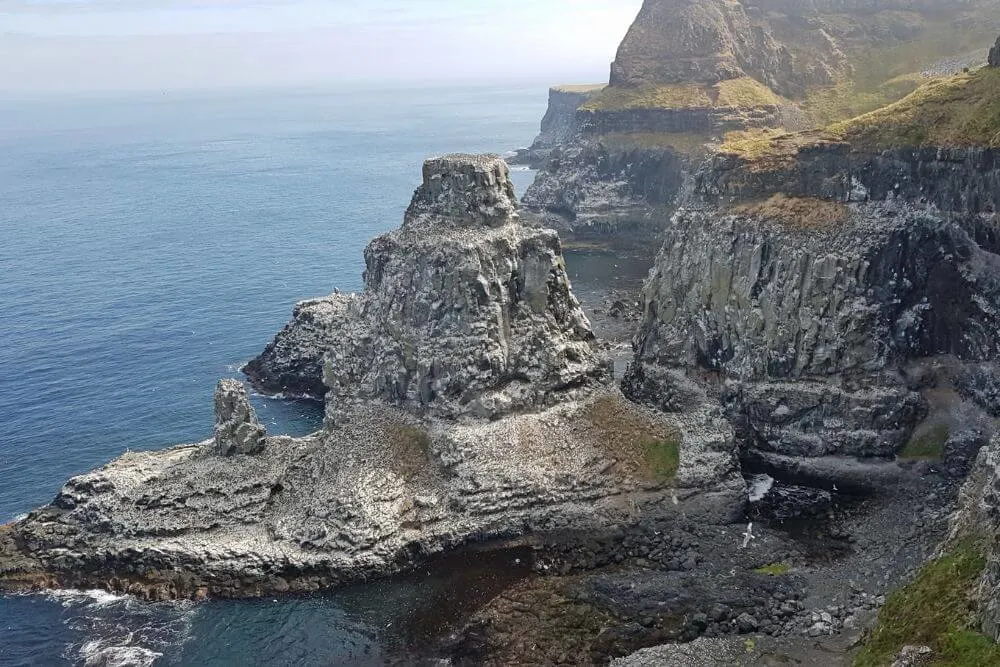
The largest seabird colony in Northern Ireland is on Rathlin Island. Rathlin West Light Seabird Centre, run by RSPB, offers unparalleled views of the colony. The viewing platform, which is located lower on the cliff than the centre, allows you to see seabirds such as Kittiwakes, Gannets and Puffins (May-July) jostling for the best nesting site and later on, the young chicks.
Added bonus: You will also be able to see the famous “upside-down lighthouse” here.
Bird Watching in Ireland FAQ
Where can I learn more about birds in Ireland?
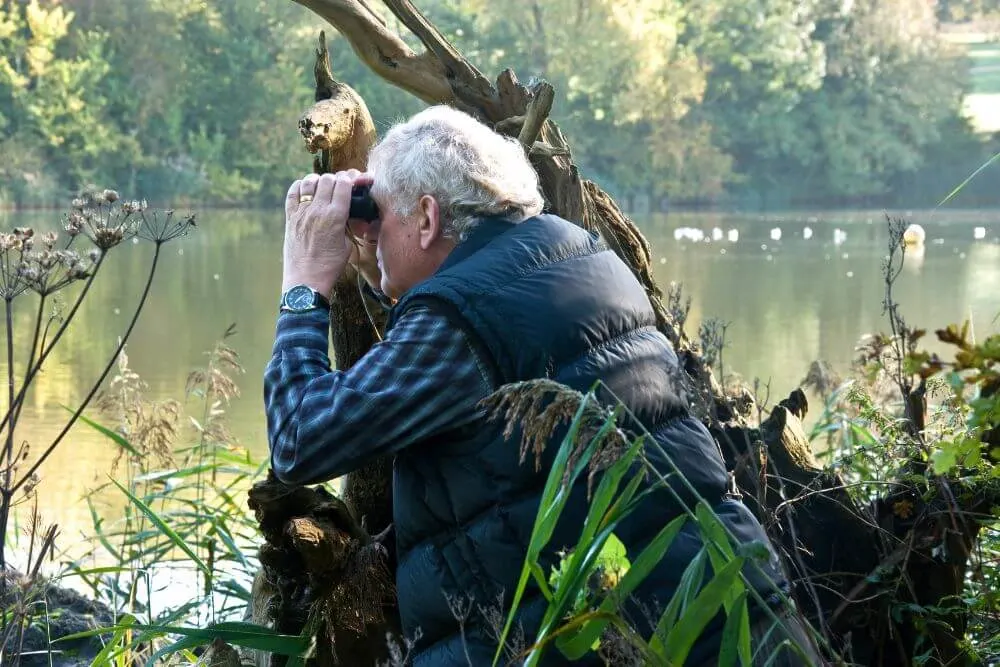
Bird Watch Ireland is a charity that provides great resources on all things avain in Ireland. They are also responsible for maintaining some of the nature reserves, such as the East Coast Nature Reserve and they run the Bird Watching Observatory on Cape Clear. For more information about Bird Watch Ireland, as well as courses and events, please check their website. It is also possible to take part in a variety of bird watching courses and events.
Eric Demspey, aka “the Birdman” is one of the leading experts in Irish birds and wildlife. He has published several best selling books on birds and bird identification and offers guided tours and other tailored events. Through his in-depth knowledge and insight, he offers a unique birding experience especially if you are looking for bird watching holidays Ireland has to offer.
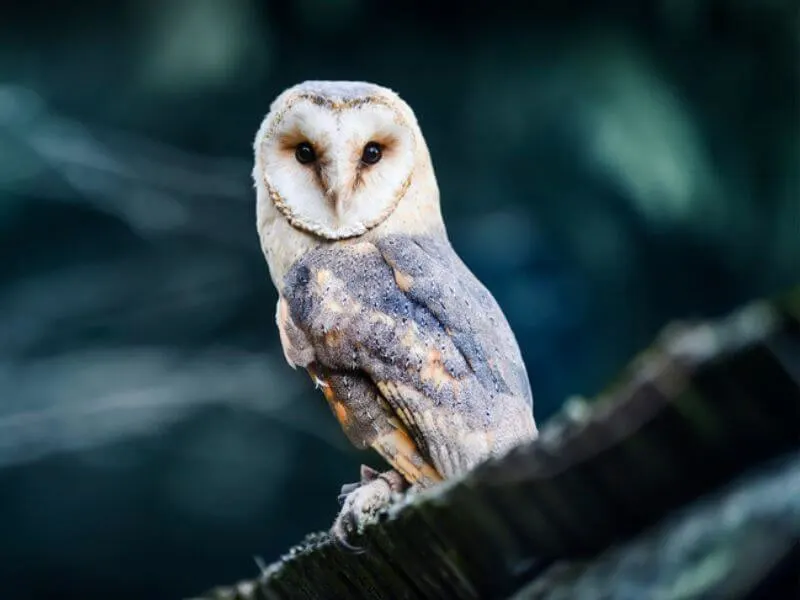
Irish Birds
Interested in reading more about Irish birds? Then start with the garden birds of Ireland or the impressive birds of prey in Ireland in the wild, where you will learn about the eagles in Ireland and other birds of prey like the Kestrel or Ireland’s owl species.

(Irish Nature Expert and Celtic Enthusiast from Ireland)
Emer Walker, founder of LetsGoIreland.com, is a Cork native with profound expertise in Irish nature and ecology. Holding a PhD in Restoration Ecology and backed by extensive research in ecological sciences, she’s delved deep into Ireland’s natural wonders, from its rugged landscapes to its serene beaches. Emer’s passion also encompasses Celtic art and traditions. As a true authority on Ireland’s natural and cultural heritage, she invites readers through LetsGoIreland.com to immerse themselves in the authentic Irish experience.
